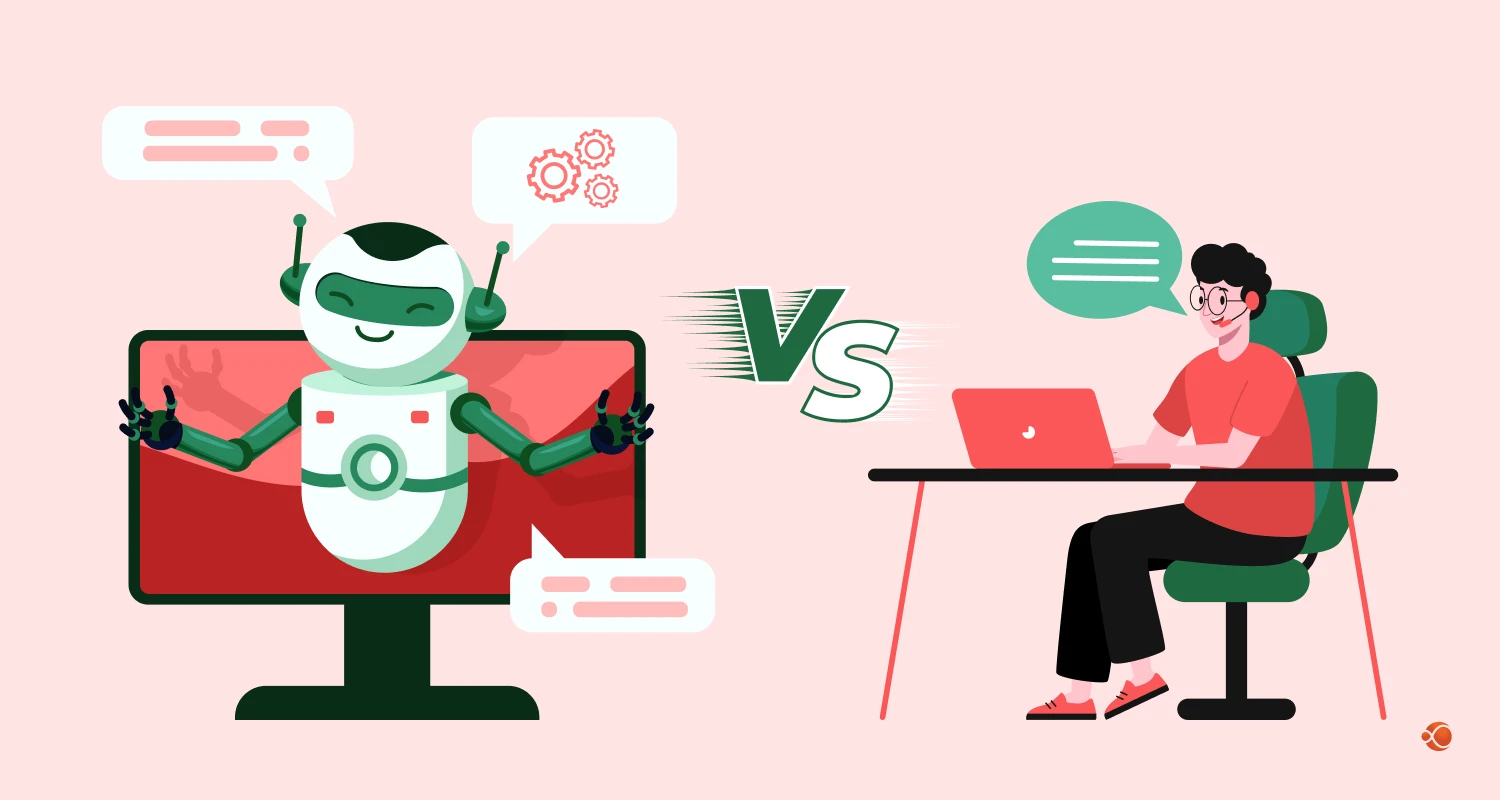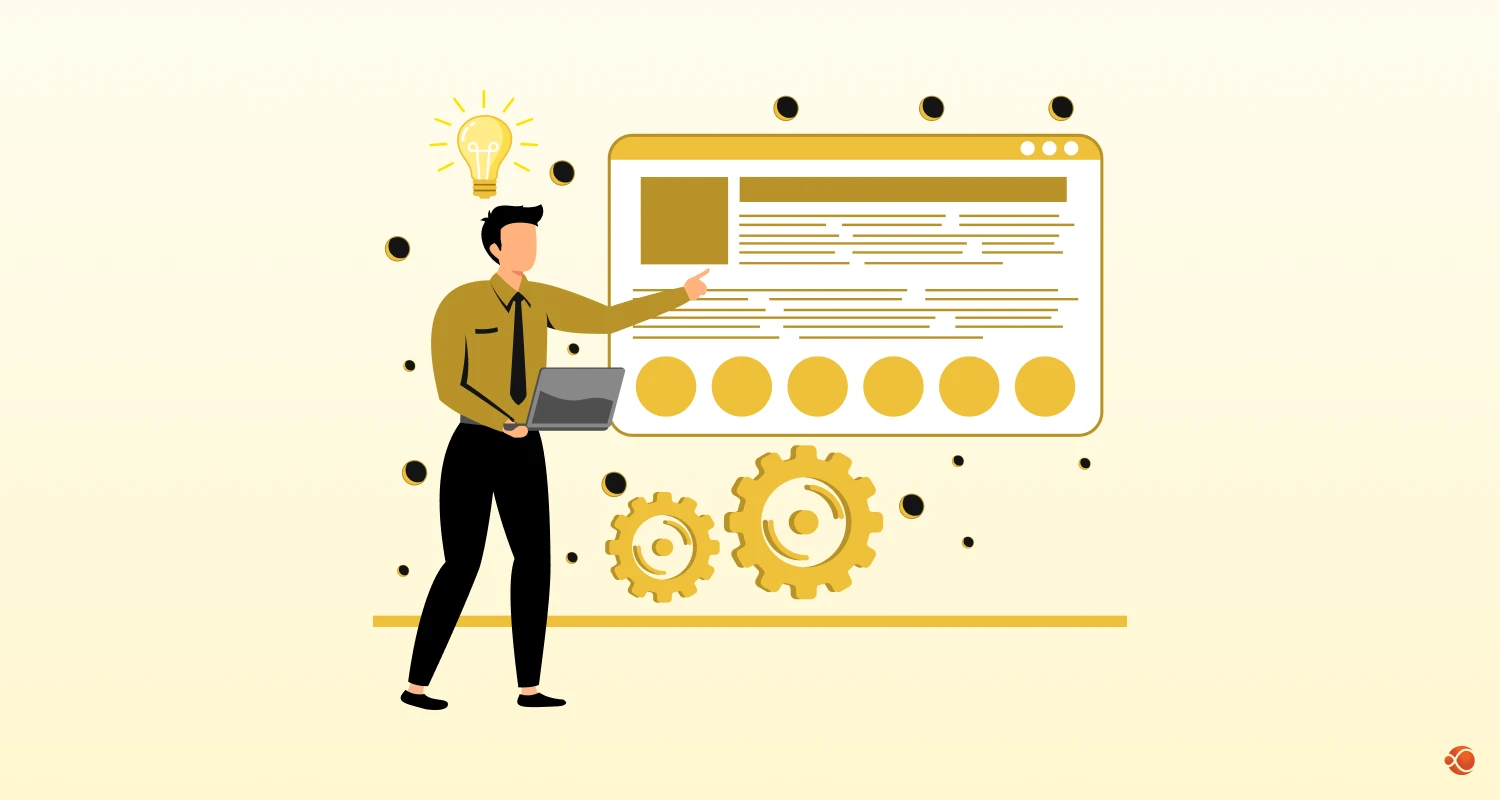The retail sector is rapidly changing, evolving and the demand to sustain your business in the retail landscape is increasing. To address such challenges, businesses are now turning to AI in retail.
The use of artificial intelligence in retail is not limited to improving customer experience or adding AI-driven features to your ecommerce store. Businesses are using real-time inventory tracking using AI, visual recognition in retail, and other AI in retail use cases for inventory management and loss prevention. Today we will discuss at length how to achieve inventory accuracy with AI, benefits of AI-based shelf monitoring, AI-driven inventory tracking and other aspects to understand the potential of this integration.
The Need for AI Loss Prevention in Retail Industry
The retail industry has always struggled with inventory inefficiencies, resulting in overstocking, understocking and other stock management issues. Other than this internal theft, shoplifting and other such challenges have also contributed significantly to the increasing threat of loss in the retail industry.
Retailers saw a 93% increase in the average shoplifting incidents in the year 2023 as per 2024 National Retail Federation.
Enter artificial intelligence and visual recognition technology. AI loss prevention is made possible by using next-gen technologies like computer vision and machine learning algorithms. Retailers can monitor inventory levels in real-time, proactively detect suspicious behaviours or set up automatic alerts for theft detection or stock level management, and prevent losses before they occur.
As the competition in the real industry is intensifying, retailers around the world must buckle up and look for eCommerce software development solutions that expertise in using generative AI in retail, AI-driven loss prevention and other AI in retail use cases.
Understanding Retail Losses and Their Impact
Before understanding how to use AI in retail commerce, we need to understand the different types of losses faced by retailers.
Types of Losses in Retail
Order-to-cash cycle refers to the entire customer journey from order placement to business receiving payment. This cycle covers all steps from order management to final fulfillment and invoicing, payment collection and reporting.
Retailers face many challenges that can hamper profitability and operational efficiency in the O2C (order-to-cash) cycle. The two broad categories for losses are – preventable and uncontrollable. From internal theft to external disruptions like natural calamities, these losses affect the entire order-to-cash cycle from bottom line to the top management.
Here are the major type of AI Retail losses you should know about:
| Type of Loss | Description |
| Inventory Shrinkage | Theft damage or errors in stock management. |
| Theft | Both external (shoplifting) and internal (employee theft). |
| Fraud | Payment fraud, return fraud, and warranty fraud. |
| Supplier Fraud | Charging extra for short deliveries, or billing for goods not received. |
| Returns Loss | Losses from customers returning used or damaged goods. |
| Administrative Errors | Mistakes in pricing, accounting, or inventory handling. |
| Damage in Transit | Goods damaged during transportation from supplier to store or customer. |
| Perishable Goods Loss | Short shelf lives that expire or become unsellable. |
| Operational Inefficiencies | Inefficient process for internal processes leading to increased operational costs. |
| Cybersecurity Incidents | Data breaches or cyberattacks causing financial and reputational damage. |
| Product Obsolescence | Products becoming outdated, requiring markdowns or disposal. |
| Natural Calamities | Natural disasters like floods, fires, or pandemics disrupting operations. |
| Legal and Compliance Violations | Penalties or fines for not following regulations. |
| Wastage | Over-ordering, spoilage, or inefficient use. |
Top AI Use Cases in Retail for Inventory Accuracy and Loss Prevention
The use of different AI techniques for addressing challenges of inventory management and loss accuracy are widespread. From generative AI in retail to AI-driven loss prevention and visual recognition in retail, there are many AI in retail examples.
1. Detecting Suspicious Behaviour
AI Powered Surveilliance
Modern surveillance systems come equipped with AI capabilities. They can differentiate between normal shopping behaviour and suspicious activities. These systems track movements, identify if the items are concealed or not and alert the security personnel to potential shoplifting incidents.
Facial Recognition
When addressing privacy concerns, facial recognition identifies known shoplifters with a history of retail fraud. When implemented with proper safeguards, this technology can significantly reduce external theft. Target has deployed facial recognition at select locations that can alert security staff when previously identified shoplifters enter the store.
Gesture Recognition
Advanced AI systems are able to detect specific hand movements and pattern behaviours of shoplifters. These systems study the hand movements and flag suspicious actions like concealing items in clothing or bags, without having them scanned at the counter.

2. Preventing Employee Theft
AI Monitoring Systems
Advanced AI systems are able to detect unusual employee behaviours like frequent void transactions, unusual register activity and excessive returns processing. Home Depot makes use of AI for analyzing POS transactions and flag patterns that might indicate employee theft.
AI in Returns Processing
As per the NRF and Happy Returns 2024 Consumer Returns in the Retail Industry report, the retail industry returns were projected to reach $890 billion USD by the year 2024. And 76% of consumers choose ecommerce websites with a free returns policy. Most retailers are looking for AI software development services to develop smart systems that verify legitimacy of returns by cross-referencing transaction records and analyzing customer purchase history, to reduce fraudulent return attempts.
Automated Inventory Management
AI-driven inventory systems provide real-time tracking which makes it easier to detect any anomalies in inventory levels. Amazon fulfillment centers make use of AI-enabled inventory systems to track all items from reception to shipping. This reduces internal theft opportunities.
AI for Data Entry Verification
These systems verify inventory counts and entries, flagging suspicious adjustments or discrepancies that might indicate theft or fraud. Companies can integrate AI verification systems that compare expected inventory levels with actual scans to identify potential internal shrinkage.
3. Combating Vendor Fraud
AI-Enhanced Auditing
analyze supplier relationships, identifying patterns that may indicate short shipments, overcharging, or other forms of vendor fraud.
Invoice Anomaly Detection
AI systems can analyze thousands of invoices to identify inconsistencies, duplicate billings, or unusual charges that may indicate vendor fraud. You can implement AI systems that scan all vendor invoices for pricing anomalies and comparison with contractual terms.
Delivery Verification Systems
These use computer vision to verify that delivered quantities match what was ordered and invoiced. Implementing AI-powered receiving systems require using camera arrays to count and verify incoming shipments automatically.
Contract Compliance Monitoring
AI tools can analyze vendor contracts and automatically verify that all pricing, discounts, and terms comply with agreed-upon arrangements. We can use AI systems to monitor vendor compliance with contractual terms and automatically flag deviations.
4. Loss Prevention Training
AI-Driven Training Programs
AI systems can create personalized training scenarios for staff based on actual loss patterns in specific stores. Home Depot uses AI to develop customized loss prevention training modules tailored to each store’s specific theft patterns.
Simulation-Based Learning
Combining virtual reality and AI creates real-life-like training scenarios for loss prevention staff. Target has implemented AI-powered simulation training that improved security staff response times by 40%.
Performance Analysis
AI systems track the effectiveness of loss prevention measures and staff, providing targeted feedback and improvement strategies. Walmart uses AI performance analysis to identify which loss prevention techniques are most effective in different store environments.
Real-time Coaching
AI systems can provide immediate feedback to staff on potential security oversights or procedural errors. AI coaching systems that give security staff real-time guidance during potential theft situations.
5. E-Commerce Fraud Prevention
Fraud Detection Algorithms
Advanced algorithms are used for identifying suspicious online transactions. Hire AI developers that can create smart software solutions for analyzing data points like IP address, shipping address and purchase patterns.
Behavioral Analysis
AI monitors user behavior on e-commerce platforms to detect patterns associated with fraudulent activities. eBay has implemented user behavior analysis that can flag accounts exhibiting unusual purchasing or selling patterns.
Account Takeover Prevention
These systems identify unusual login patterns or account activities that might indicate unauthorized access. Shopify’s AI security tools can detect when accounts show signs of compromise based on typing patterns, navigation behavior, and other biometric indicators.
Payment Verification Systems
AI tools can verify the legitimacy of payment methods through multiple data points beyond simple CVV checks. PayPal uses AI systems to analyze transaction patterns and detect potentially fraudulent payment methods with 99% accuracy.
6. Reducing Operational Errors
Process Optimization
Machine learning algorithms identify inefficiencies in retail operations and suggest improvements. Kroger has implemented AI process optimization that reduced stocking errors by 30% through improved workflow recommendations.
Smart Shelf Technology
AI-powered smart shelves detect misplaced items and alert staff to potential pricing or inventory errors. Whole Foods has tested smart shelf systems that maintain inventory accuracy and reduce pricing errors by over 85%.
Predictive Analytics
One of the use cases of AI in the retail industry is the ability to forecast potential operational issues before they occur. This prepares the retailers better to take preventive actions. Companies use predictive AI to identify stores likely to experience inventory discrepancies based on historical patterns and current conditions.
7. Supply Chain Management Optimization
Predictive Analytics for Stock Levels
AI forecasts optimal inventory levels based on multiple factors, reducing losses from overstocking or stockouts.
AI in Logistics
These systems optimize shipping routes and methods, reducing damage in transit and delivery costs. Target’s AI logistics optimization reduced in-transit damage by 30% through better packaging recommendations and route planning.
Counterfeit Detection
AI and computer vision can identify potentially counterfeit products before they enter inventory.
Demand Forecasting
Advanced AI models predict future product demand based on numerous factors, reducing inventory obsolescence.
Top AI Technologies Used for Retail Loss Prevention
AI is a broad concept with many specialized services and capabilities that provide custom retail automation and loss prevention solutions for industry. Here are some of the leading technologies used with AI in retail industry:
Generative AI in Retail
Generative AI in eCommerce can be used for creating scenarios to train loss prevention systems, and simulating thousands of theft patterns that might not be easily detectable in real-world data. This refines and enhances the detection capabilities of security systems.
Computer Vision for Theft and Shelf Monitoring
Computer vision is another AI in retail example which improves in-store surveillance with real-time video analytics. Traditional CCTV cameras provide live feed of the store, but AI-powered video feeds can also identify patterns of theft, monitor shelf engagement and provide valuable insights into how customers interact with products.
RFID Tracking Enhanced with AI Analytics
RFID technology capabilities can be boosted with proper AI analytics services. AI algorithms are able to analyze RFID signals for identification of unusual item movement, highlight inventory inconsistencies and even predict internal theft with behaviour scanning or identifying stock level anomalies.
Prerequisites of Integrating AI in Retail

Implementing AI-powered visual recognition in retail requires more than just installing smart cameras. It needs a multi-layered integration effort with a thoughtful alignment of hardware, software and operational processes.
Hardware Infrastructure
- High-resolution cameras positioned throughout stores, warehouses, and entry/exit points.
- Edge devices or IoT sensors to preprocess video feeds locally, reducing latency and bandwidth load.
Software Ecosystem
- AI models trained specifically for retail environments—capable of identifying products, human actions, shelf stock levels, and anomalies.
- Cloud-based analytics platforms are used for real-time data processing, visualization, and decision-making.
- Inventory management systems that seamlessly sync with AI outputs to adjust stock counts and flag discrepancies.
Privacy and Compliance
- Visual recognition systems must comply with data protection regulations like GDPR, CCPA, and regional privacy laws.
- Retailers must ensure transparent signage, clear data usage policies, and options for customer opt-outs where required.
Staff Training and Change Management
- Employees should be trained to interpret alerts and insights generated by AI systems.
- Define new workflows for restocking, loss prevention, and incident response based on visual AI input.
Best Practices for AI Integration in Retail
To achieve AI in Digital Transformation of the Retail industry, you need a team of dedicated developers who can come up with a structured AI in retail integration roadmap, customized to your specific needs. The success of AI integration is balanced on the ability of using the right tools and best practices in accordance with client goals. Here are some best practices retailers should follow to ensure impactful AI adoption:
Define the Objectives of AI integration in Retail
Before adding AI to your retail workflow, it is important to first identify the problems in your existing solution that you want to solve. Define your goals and AI in retail use cases, as this helps your development team to identify your problem statement better, and choose the right AI models best suited for your project.
Use Existing Data Assets
Most retailers would have access to large datasets on POS logs, footfall metrics, video surveillance and customer transactions. By using these existing datasets, we can train AI models that are designed and trained on your environment. Historical data can also be used as a benchmark to assess current performance and measure the post-AI implementation improvements.
Integrate AI with Core Retail Systems
AI should be seamlessly integrated with core retail systems of your business such as inventory management systems, ERP platforms, and CRM tools. This brings out the most out of AI-driven software solutions by providing real-time, context-aware intelligence. For instance, AI-powered shelf scanners can directly be linked with databases to set up retail automation for reordering.
Choose Modular and Scalable Solutions
Retail environments evolve rapidly. Opt for AI solutions that are modular, scalable, and cloud-ready . They should be capable of growing with your store network and adapting to seasonal trends or product expansions without requiring complete overhauls.
Ensure Data Privacy and Compliance
Giving AI access to sensitive customer data based on their behaviour and video footage required to ensure compliance with data protection regulations like CCPA and GDPR. Always invest in AI systems that prioritize secure storage, edge processing, anonymization and other ethical AI practices.
Monitor and Optimize AI Retail Performance Continuously
AI in digital transformation requires to be checked periodically to see if the efforts are producing the desired results. Regularly assess AI performance with clearly defined Key Performance Indicators, and use the feedback to improve accuracy, retrain models and refine AI processes.
Final Words
AI powered visual recognition is helping secure the retail industry against losses and improving inventory management. With advanced technology usage like computer vision, RFID, and generative AI solutions are great assets for retailers to take proactive action against controllable variables and reduce the impact of uncontrollable losses.
Adopting AI is increasingly gaining importance in today’s competitive retail market. Retailers must choose a reliable AI software development company to integrate these solutions effectively for improving data privacy and enhance retail capabilities.
FAQs on AI in Retail
How can AI be used in Retail?
AI in retail use cases include providing personalized customer experiences after studying customer purchase history and browsing behavior to offer tailored intelligent product recommendations. You can also improve inventory management with AI for predicting stock needs based on sales patter and external factors.
Visual search allows customers to upload images of products they like to find similar products and smart chatbots provide retail automation for customer inquiries to an extent. The list can go on, if you are looking for a tailored AI in retail implementation partner, contact CMARIX.
How to use AI in Retail Business?
Initiate by defining your objectives and identifying specific problems that need to be solved with AI for retail. This can include reducing returns, improving inventory forecasting, setting up surveillance systems and more.
You can hire AI developers to integrate ready-made retail platforms or build custom AI driven software solutions from scratch. It is ideal to take an iterative approach to AI implementation in retail with pilot projects before complete transformation.
What types of retailers can benefit from AI-based visual Recognition?
Fashion retailers can use AI visual recognition to empower their customers to search for their favourite clothing using image references. They can also add a virtual try-on experience that increases user engagement and motivates them towards purchase. Grocery stores can implement self-checkout systems and automate inventory tracking. Different retailers can make use of AI-based visual recognition depending on their requirements.
What Role Will AI Play in the Evolution of Retail Inventory Systems?
Real-time inventory tracking will become industry standard, predictive analytics will be richer with more variables to create accurate demand forecasts. Autonomous fulfillment systems can take over warehouse management with minimal human intervention, and AI can raise any concerns or flags in the supply chain process to take preventive actions before impacting inventory.







